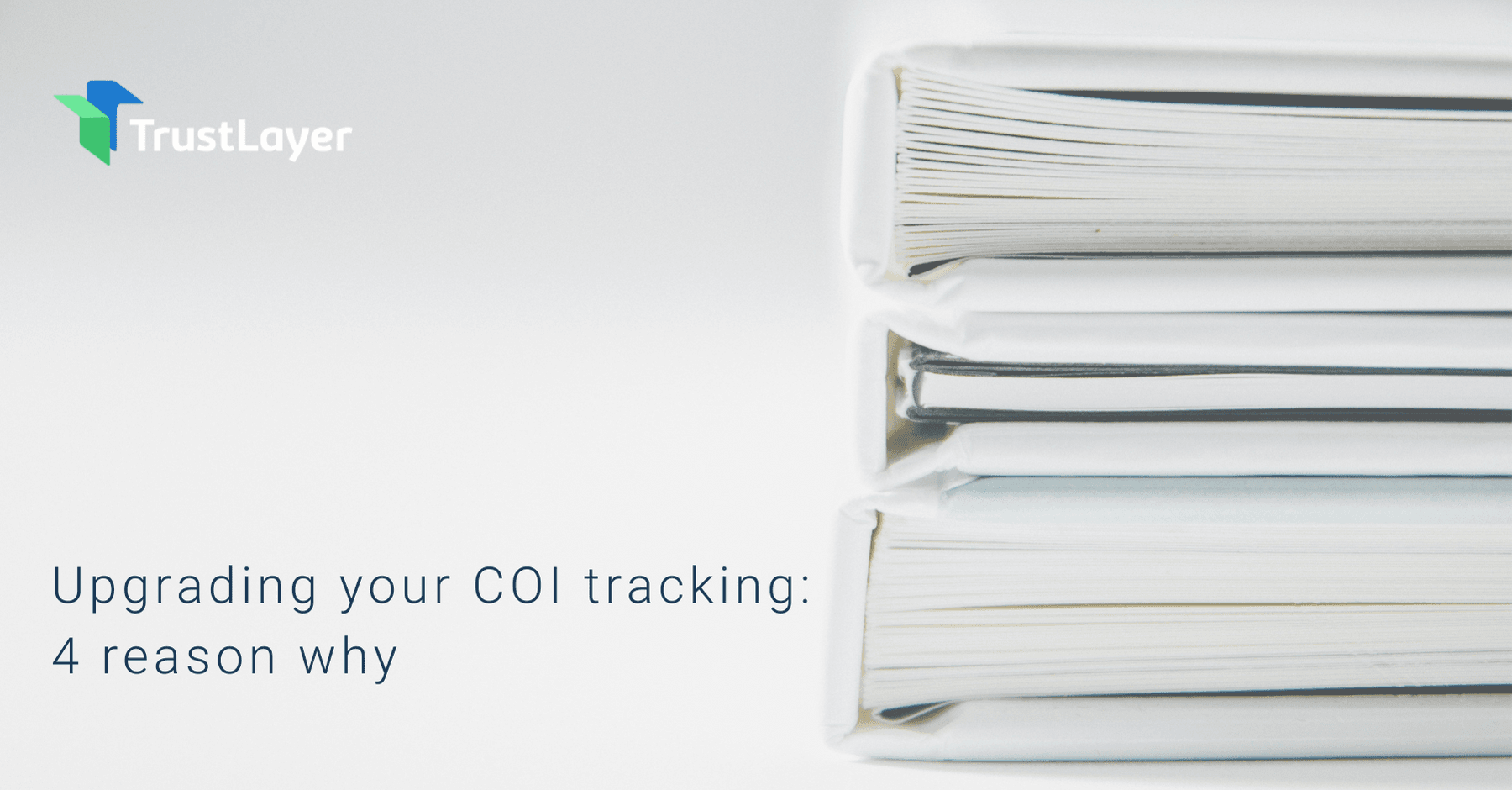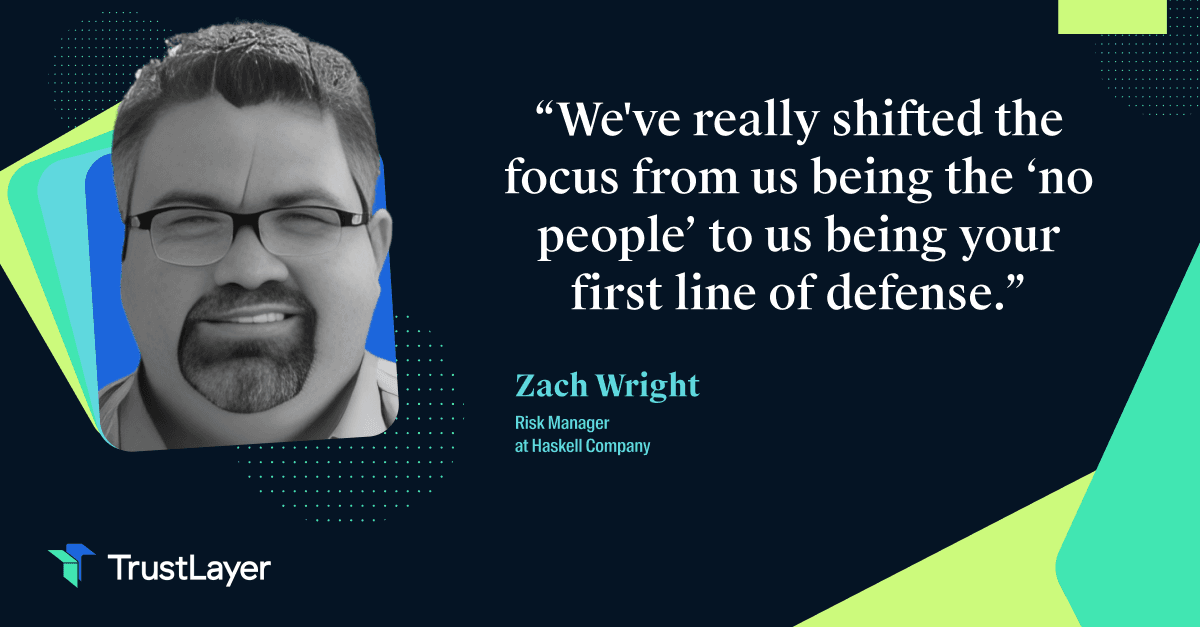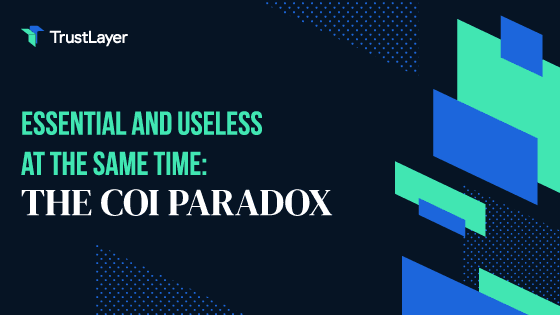It’s no secret that the standard ACORD 25 certificate of insurance (COI) hasn’t kept up with the times. In fact, its last major revision was as far back as 2016/3. COIs can be difficult to read and easy to forge. When it’s time to track and collect proof of coverage, your company’s risk specialist would prefer to do just about any other task.
But, thanks to digital advancements, the process has been improving over the years. It’s now possible to automate much of the risk management and COI collection process. If the thought of a digital solution appeals, here are four reasons to upgrade your COI tracking solution.
1. Save time and resources
Whether you employ a team, a single risk specialist, or ask an administrative assistant to collect and review COIs, a manual process consumes considerable resources. Responsible individuals must send emails, make phone calls, and keep track of certificate expirations.
In some organizations, this could involve contacting:
- Vendors
- Suppliers
- Subcontractors
- Franchisees
- Tenants
- Other third-party partners
Monitoring this activity in a spreadsheet or database adds to the time invested. Instead, you could invest in a risk management stack that handles these tasks automatically. After you set it up, TrustLayer’s platform tracks expiration dates and sends requests for updated COIs whenever they come due. Organizations can save time by:
- Reducing the need to sort, scan, and upload files
- Maintaining documents all in one place
- Eliminating the need to contact third-parties manually
2. Increase response rate to COI requests
Carrot or the stick? Without either, it’s hard to get responses from manually requesting COIs. Unless you’re willing to stop doing business with a company until they provide one, it’s simply not a priority for them.
Making the process less manual increases the response rate. With a platform that sends automatic reminder emails, and a centralized place to upload documents, vendors are more likely to comply with your request. But having the COI on file isn’t enough.
3. Better monitor COI compliance
Under the historical operating model, once a team receives a COI, they have to review it for completeness and accuracy. After review, a number of questions remain unresolved. For example, does the company carry adequate liability coverage? If a COI is out-of-date or the third party’s coverage is insufficient, the risk manager has to follow up again.
New risk management tools can digitally “read” the COIs your vendors supply and compare them to criteria you’ve selected - such as minimum liability coverage limits. They’ll flag issues for employee review or send them back to the vendor. This new process saves time reviewing, leading to greater compliance and reducing your overall risk.
4. Reduce your overall risk
Automating COI collection and review reduces your overall risk exposure. You’ll have more COIs on file, and more assurance that your third parties have purchased adequate risk protection in their policies (thus protecting your business).
Upgrading your COI tracking stack reduces errors and inefficiencies. It frees up time for risk managers to focus on working with vendors or suppliers who need more insurance coverage or look into replacing those who refuse to comply. All of which contribute to your overall risk profile, which could lead to lower rates on your insurance policies.
TrustLayer’s end-to-end platform manages all of your COI tracking needs. Once set up, our AI and machine-learning tools review and flag COIs based on criteria you select, and only involve members of your risk management team when needed. After implementing our platform, customers saw a 3x reduction in time spent on COI tracking and a 300% increase in compliance. COI tracking is no longer the headache it once was, and your risk manager won’t need a vacation when it’s all done.








